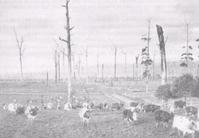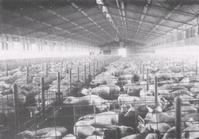


Chapter 1
I Groping In A Strange Environment: 1788-1851
II Farmers Take The Initiative: 1851-1888
III Enter Education And Science: 1888-1927
IV Agricultural Science Pays Dividends: 1927-1987
V Examples Of Research And Development 1928-1988
i Land assessment
ii Improving the environment
iii Adapting to the environment
iv Improving farm management
VI International Aspects Of Agricultural Research
VII Future Prospects
VIII Acknowledgements
References
Index
Search
Help
Contact us

The future of the scheme is still uncertain but, at a time when there is a surplus of many agricultural products on the world market, it is unlikely that any government would now encourage, much less initiate, such developments. Indeed, the efficiency with which irrigation water is used in well-established irrigation schemes is currently under scrutiny.
In today's mature water economy it is much less likely that large new dams will be built at public expense for irrigation. However, the practice continues of selling water under historically determined non-transferable quotas at prices well below its cost and its productive value. This perpetuates uneconomic allocation of irrigation water, and tends to add to salinity problems.[59]


Substantial resources have also been invested since 1947 in attempts by CSIRO to develop techniques of rain-making by the use of fine particle sprays (silver iodide smoke) to induce clouds, particularly cumulus formations in temperate areas, to precipitate their moisture. The results have not, however, yielded consistent and reliable evidence that rainfall can be significantly increased, particularly in the drought affected regions which need it most, and, in any case, the high costs of application have made the technique unattractive.
On the other hand, research on the use of mono-molecular surface films to cover dams and water storages has led to some practical methods of reducing evaporation losses by up to 50 per cent under certain conditions. Because of its national importance a great deal of research continues to be undertaken on problems of water collection, storage and use, and on techniques of irrigation and drainage. In most cases these issues involve difficult technological problems combined with equally complex economic considerations and, although progress is being made, setbacks and disappointments continue to occur.
Trace element research
By contrast, a series of improvements to the environment which were badly needed, universally welcomed and yielded outstanding economic returns were those associated with the provision of certain trace elements to the soils of many localities throughout temperate Australia.
The nutrients in Australia's very old and eroded soils had been badly leached and, although the relatively sparse native vegetation was adapted to these conditions the introduced crops and pastures were not. It was G. Samuel and C. S. Piper who, in 1929, recorded the first trace element deficiency, that of manganese in the black soils on which oats were being grown near Mount Gambier in South Australia.[60]
From the mid-thirties onwards trace elements progressively came to be regarded in Australia as fertilizers in the hands of agronomists, permitting successful crops and pasture production, where previously such pastures and crops could not be grown.[61]
People in Bright Sparcs - Piper, C. S.; Samuel, G.
 |
Australian Academy of Technological Sciences and Engineering |  |
© 1988 Print Edition pages 34 - 36, Online Edition 2000
Published by Australian Science and Technology Heritage Centre, using the Web Academic Resource Publisher
http://www.austehc.unimelb.edu.au/tia/041.html